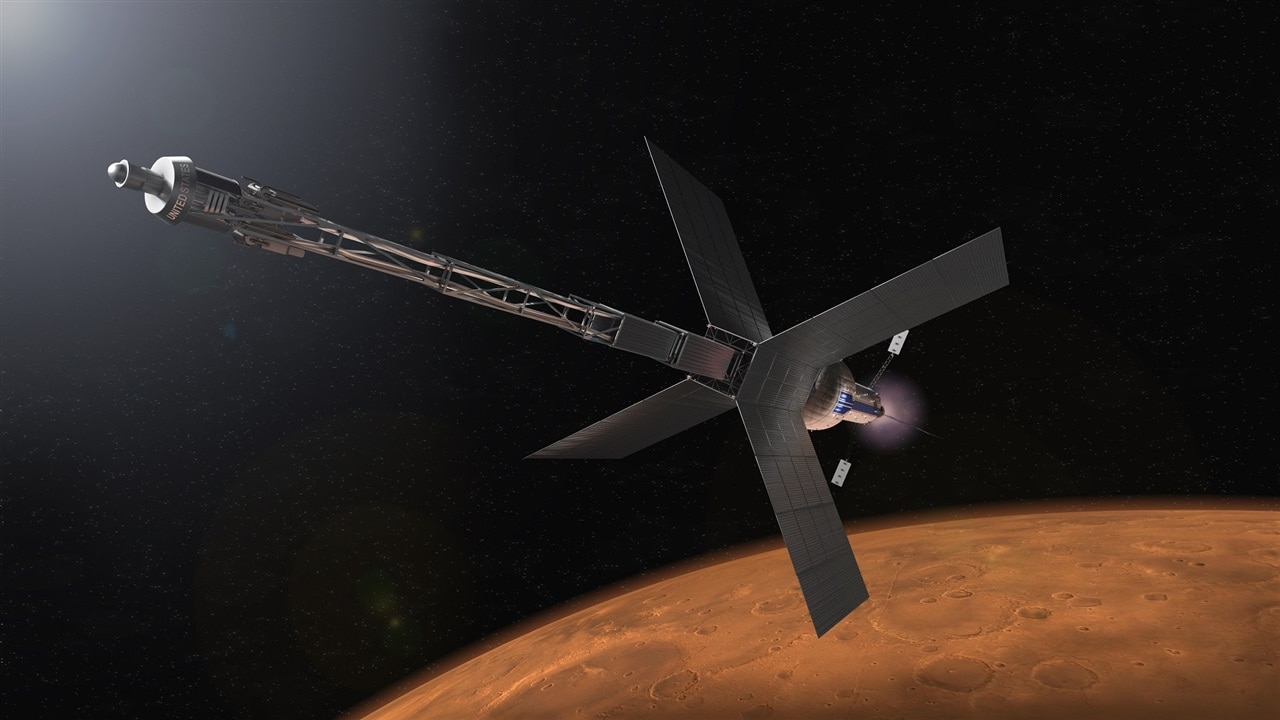
Artist's impression of a nuclear propulsion system that could send humans to Mars. (Image Credit: NASA)
NASA's Marshall Space Flight Center in Huntsville, Alabama., is exploring new and faster ways to travel to Mars, and one of those innovations involves nuclear-powered engines. The agency's Space Launch System rocket that will send NASA astronauts to the moon succeeded on an uncrewed flight to the moon in November.
The engine powering the rocket was built at the Marshall Space Flight Center, which is now hoping to use nuclear-powered engines to cut down on travel times to the red planet. These engines have been closely examined as a potential solution for that endeavor. "We're exploring both nuclear electric and nuclear thermal propulsion options for crewed Mars missions," Anthony Calomino, NASA's nuclear technology portfolio lead within STMD, said. "Each technology has its unique advantages and challenges that need to be carefully considered when determining the final preference."
NASA's goal is to have robust and enduring access throughout the solar system, which can be done with nuclear power that outperforms the best chemical fuels. Rocket engines heat gases at high pressure, expelling them out of a nozzle's back end. Nuclear works similarly to this, except it generates thrust without relying on an oxidizer and fuel combination. As a result, it has a lower fuel-carrying payload for that task, effectively boosting performance. Nuclear-powered engines generate thrust with just a gas or liquid heat-up process.
"While NASA's immediate priority is returning humans to the Moon with the Artemis program, we are also investing in 'tall pole' technologies that could enable crewed missions to Mars," said Jim Reuter, associate administrator of NASA's Space Technology Mission Directorate (STMD). "We look forward to seeing what innovations industry offer in nuclear propulsion as well as fission surface power via a forthcoming request for proposals for that technology."
This could enable rapid and efficient transfers in space between the Earth and the moon while presenting capable deep-space science and exploration opportunities. A quicker Mars journey is crucial for crew health and safety. Spending less time in space reduces space radiation exposure. However, nuclear also presents challenges due to the fabrication and materials involved in constructing the reactor.
Despite those drawbacks, engineers and rocket scientists are starting to understand nuclear's capabilities. Even then, more needs to be looked at, including the technology and making it perform the required job. Earlier this year, NASA announced a partnership with DARPA to develop a nuclear thermal rocket engine as early as 2027.
Have a story tip? Message me at: http://twitter.com/Cabe_Atwell
